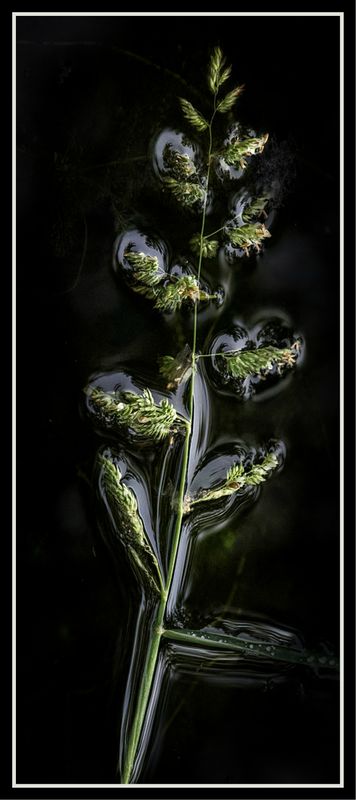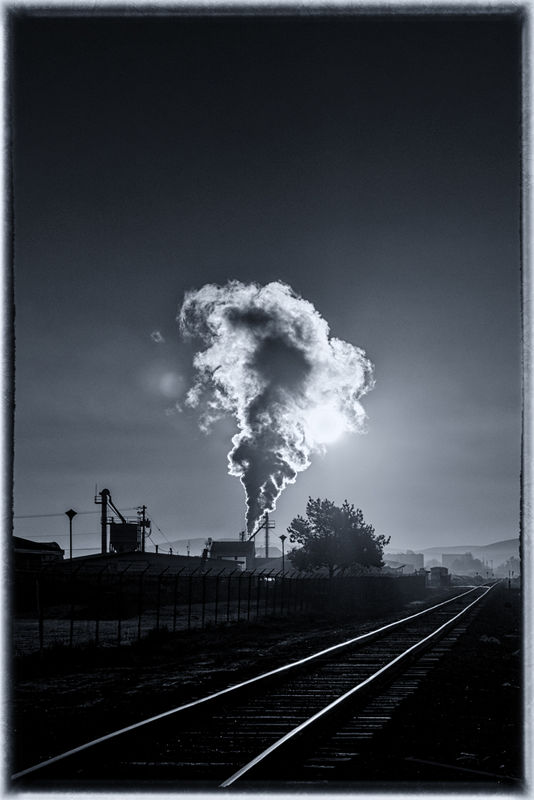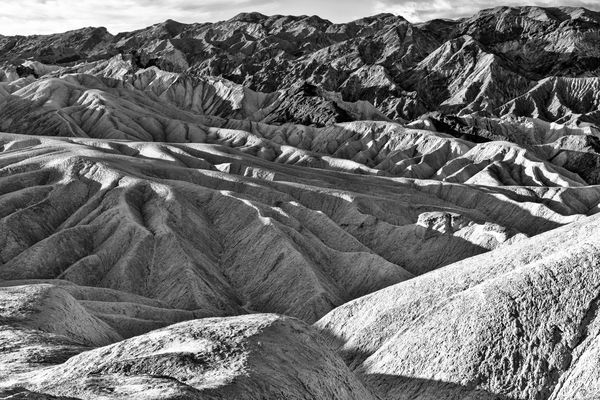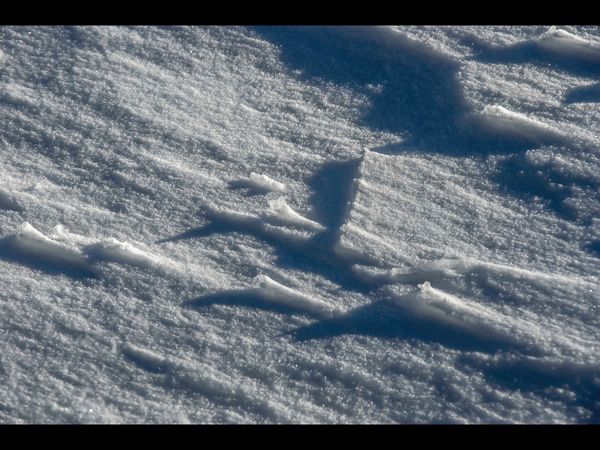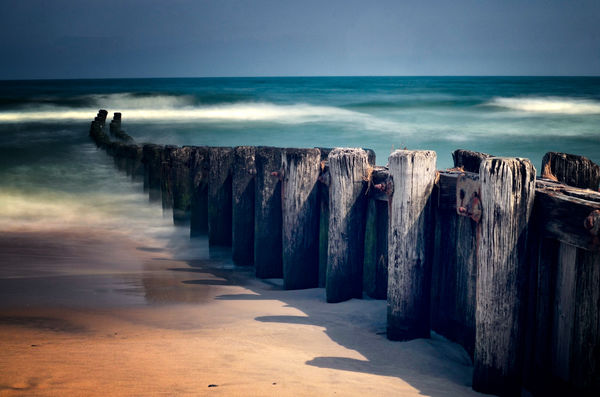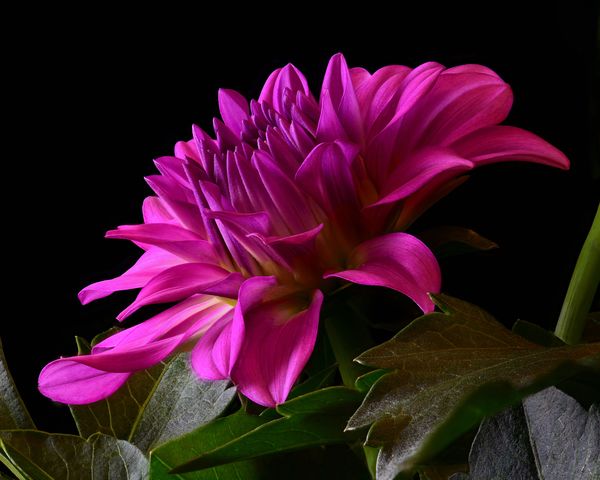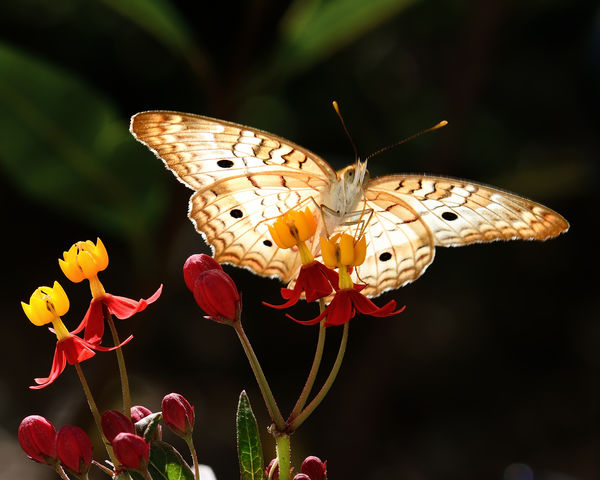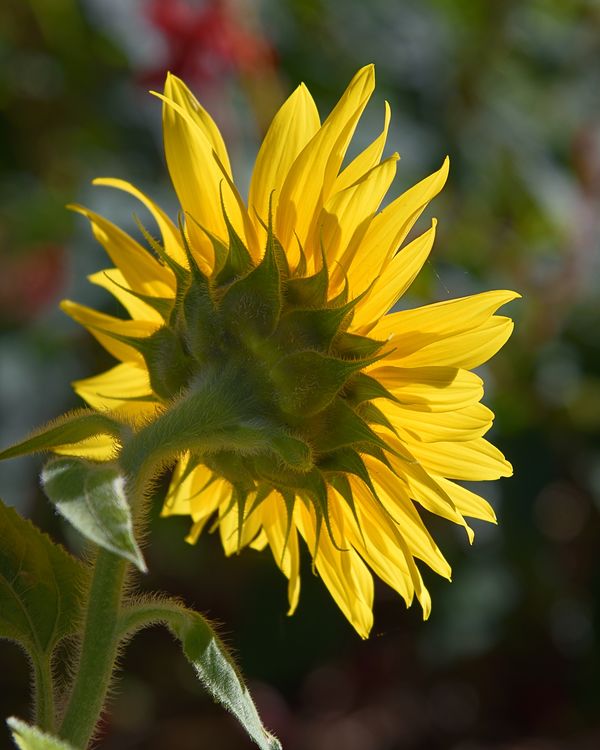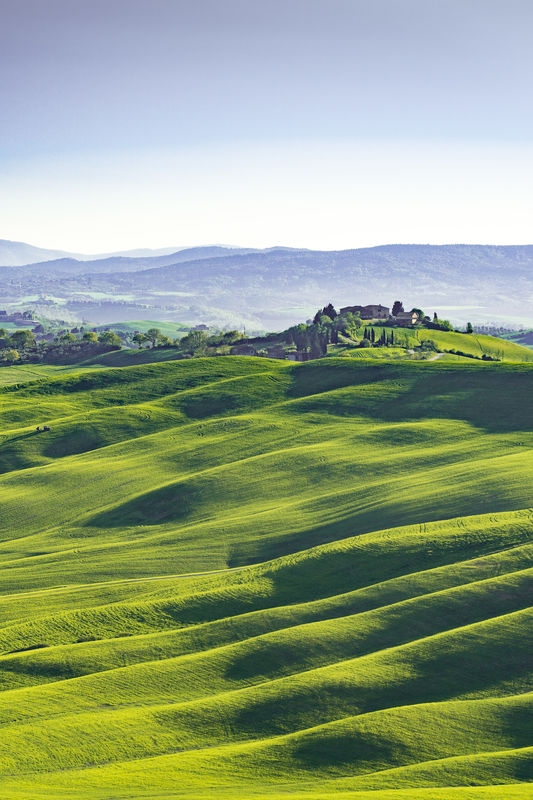Considering the Aspects of Light: Part 1 - Direction
May 14, 2018 19:05:19 #
Welcome to Considering the Aspects of Light, a four-part series in which we will explore the special attributes of Direction, Light Intensity, The Colors of Light and the Role of Light in Composition, with a focus on what makes light interesting, and what motivates us to describe it as such.
Today's topic is Direction of Light. The direction of light is often one of the first things we evaluate when we are composing for a specific result. How does the direction of your light source contribute to mood, emotion, story, impact?
Below are some characteristics to start our discussion:
-- side lighting emphasizes form and depth by revealing textures, details and shadows while frontal lighting often results in a "flat" look.
-- backlighting is used for creating silhouettes, for revealing details in translucent subjects, or achieving attractive rim light that causes the edges of your subject to glow.
-- shooting directly into the sun or other strong light source can result in lens flare, sun stars and rays, and other dramatic effects.
-- subjects lit from above or below can produce unusual or moody results that challenge a viewer's understanding or way of seeing.
This project is the result of a collaborative effort among several members and we hope to make the series a success with your participation. Many thanks to all!
-----
Please discuss a photo op in which the direction of light was a key point in achieving your goals for the shot. In what ways would the result differ if the direction of light was changed? Do you have any personal preferences regarding direction of light that you often pursue?
We encourage you to include an image to illustrate your comments and to expand the discussion of direction beyond the bullets and questions of the opening. Comparison shots are welcome; otherwise, please use just one photo per reply to facilitate follow-up discussion.
Although FYC usually supports wide-ranging conversations, we ask that during this four-part series, people stay as close to the current topic as possible.
Thanks again!
Today's topic is Direction of Light. The direction of light is often one of the first things we evaluate when we are composing for a specific result. How does the direction of your light source contribute to mood, emotion, story, impact?
Below are some characteristics to start our discussion:
-- side lighting emphasizes form and depth by revealing textures, details and shadows while frontal lighting often results in a "flat" look.
-- backlighting is used for creating silhouettes, for revealing details in translucent subjects, or achieving attractive rim light that causes the edges of your subject to glow.
-- shooting directly into the sun or other strong light source can result in lens flare, sun stars and rays, and other dramatic effects.
-- subjects lit from above or below can produce unusual or moody results that challenge a viewer's understanding or way of seeing.
This project is the result of a collaborative effort among several members and we hope to make the series a success with your participation. Many thanks to all!
-----
Please discuss a photo op in which the direction of light was a key point in achieving your goals for the shot. In what ways would the result differ if the direction of light was changed? Do you have any personal preferences regarding direction of light that you often pursue?
We encourage you to include an image to illustrate your comments and to expand the discussion of direction beyond the bullets and questions of the opening. Comparison shots are welcome; otherwise, please use just one photo per reply to facilitate follow-up discussion.
Although FYC usually supports wide-ranging conversations, we ask that during this four-part series, people stay as close to the current topic as possible.
Thanks again!
May 14, 2018 19:05:44 #
Several of UHH's pro photographers will be stopping by to offer their advice and insights into the importance of Direction of Light. To represent the amateur side, and to encourage participation by all levels of experience and interests, I will share one of mine 
This is a grass seedhead resting on a pond. The early morning light, coming from a low angle on the right side of the frame, emphasized the cool scientific occurrence called "surface tension of water." That area of the pond was still in shadow, which helped define the effect and create the dark contrasts.
How would a different time of day affect the outcome? If the sun was higher in the sky, the water would likely be too bright and blue to see the surface tension this dramatically, and the area around the seedhead would reflect the overhanging trees and clouds, creating visual clutter.

This is a grass seedhead resting on a pond. The early morning light, coming from a low angle on the right side of the frame, emphasized the cool scientific occurrence called "surface tension of water." That area of the pond was still in shadow, which helped define the effect and create the dark contrasts.
How would a different time of day affect the outcome? If the sun was higher in the sky, the water would likely be too bright and blue to see the surface tension this dramatically, and the area around the seedhead would reflect the overhanging trees and clouds, creating visual clutter.
May 14, 2018 20:29:29 #
Last autumn, in early morning, I found just the right conditions I'd been hoping for after passing this location several times: the smoke plume was rising directly in front of the sun and the low angle of sun created a glow along the train tracks.
This was a fun departure from what I usually photograph, landscapes and critters. If it hadn't been for my interest in backlighting - which has captivated me for as long as I can remember - I'd never have seen the potential. With backlighting in general, there seem to be so many opportunities for setting mood and for "showing off" a subject that is unique from our everyday quick and casual viewing. What is your favorite direction of light?
- I'd never have seen the potential. With backlighting in general, there seem to be so many opportunities for setting mood and for "showing off" a subject that is unique from our everyday quick and casual viewing. What is your favorite direction of light?
This was a fun departure from what I usually photograph, landscapes and critters. If it hadn't been for my interest in backlighting - which has captivated me for as long as I can remember
 - I'd never have seen the potential. With backlighting in general, there seem to be so many opportunities for setting mood and for "showing off" a subject that is unique from our everyday quick and casual viewing. What is your favorite direction of light?
- I'd never have seen the potential. With backlighting in general, there seem to be so many opportunities for setting mood and for "showing off" a subject that is unique from our everyday quick and casual viewing. What is your favorite direction of light?May 14, 2018 20:44:38 #
The Direction of Light.
Firstly, allow me to say how pleased I am that some folks around this forum are interested in LIGHT. So many photographers are totally engrossed and entrenched in equipment that they will drill down profoundly into the technology to the level of complex computer science, the molecular structure of optical glass and have discussions of electrons flowing through camera circuitry. Yet there is precious little serious discussion about the aesthetics and science of LIGHT.
At the same time, so many photographers wax poetically and philosophize on how photography is “painting with light” - how romantic and artistic is that? Yet, few really get into it. If y'all will excuse this kinda lame analogy; not having a mastery of lighting and developing a talent and propensity for SEEING LIGHT is tantamount to an artist attempting to paint a magnificent scenic vista, bringing along along his or her easel, canvas and brushes and forgetting their paints at home.
Now, there is absolutely nothing wrong with delving in to our equipment and how it functions- all good. Creatively and artistically speaking, however, there is little we can do about our gear except to buy it knowingly and hopefully get the right stuff to accommodate our work. We can benefit form the latest innovations but we ourselves can't alter, redesign, modify or or invent things unless we are engineers, industrial designers or scientists in the equipment industry. We buy and use what they give us. In lighting theory and know-how we, as photographers have incredible scope and endless creative possibilities.
With LIGHTING SAVVY, we can produce masterful imagery with as much as a immense array of studio equipment or as little as a candle or a simple light bulb and a sheet of reflective material. Award winning and iconic images have been made with North-light filtering in through a winnow, a simple one-light flash system or of course, natural out-of-doors light of many different kinds.
A mastery of lighting enables the photographer with control over the rendition of form and texture, detail, dimensionality, modeling, contrast, color harmony, tonal and color mass, mood, and even enhances many compositional elements. Lighting know-how transverses and transcends and includes just about every aspect, specialization and field of photography. In portraiture lighting control enables the making of flattering artistic interpretations as well as images of good likeness. Lighting makes for glamorizing, dramatizing and characterizing our subjects. In commercial photography lighting skills are imperative in creating realistic representations of wide scope of people, places and things and is the foremost tool in rendering surface textures, and dealing with a wide variety of reflective materials. The DIRECTION of the light is a major component of all of the aforementioned. Theses phenomena extend into every field of photography- photojournalism, nature and wildlife fields, scientific and technical photography and more.
Alright, I understand that this part is not supposed to get too technical or turn into a tutorial on lighting procedures, however, When talking about the direction of light, there has got to be some physics, geometry, trigonometry in the conversation- not like MATH and science class but basic practical interpretations. This is because the entire implementation of lighting (direction) technique in photograph has to do with where the light is coming from in relation to where the camera is situated and both in relation to the subject. Whether we are photographing a person, a flower, a loaf of bread, an automobile or a mountain range we need to discuss direction, angles, heights and distances. The biggie here is the ANGLE OF INCIDENCE “LAW”! I call it a law because it is one of the most important aspects or components of light direction. “THE ANGLE OF INCIDENCE IS EQUAL TO THE ANGLE OF REFLECTION”. Memorize that- I'll get into it as we go along.
In a studio or other controlled circumstance or environments we can place our “artificial” lighting apparatus wherever we need it to effect direction, angle and other factors. In natural, available. existing or natural lighting scenarios, we need to find the light, place the subject in the desired pattern of light, OR somehow redirect or subtract some of the light or shift the camera position or with totally immovable stationery objects or structures or vast landscapes, we simply may have to wait for an alternative time of day to ESTABLISH DIRECTION. Sometimes we can augment the natural light with an off-camera artificial source to establish direction.
Lighting direction effects dimensionality. In photography, mostly we are attempting to image a 3-dimensional object, person or scene on a 2-dimensional medium- a sheet of photographic or printing paper or a flat screen monitor. The paper or screen has 2 dimensions, height and width. The subject has height, width and depth. Taking a lesson from the Old Masters painters we employ the CHIAROSCURO effect, that is, the illusion of dimension with the implementation of light and shadow. Simply stated, “where there is light, there is shadow”, however, the camera has to see the shadow in order for the visual effect to take place. If the direction of light is co-axial or very close to the camera subject axis the shadows are not “seen” by the camera and the lighting is said to be FLAT. When the light strikes the subject from a height above the lens some shadows begin to appear and when the light strikes the subject from an angle or position laterally to the camera/subject axis the effect is more pronounced and becomes significantly more effective, dramatic and dimensional as the angle increases. There are many nuances and incremental angles and angles of incidence to explore but we oftentimes see references or terminology such as flat, off-camera, 45 degree, side, split and back lighting, to help us define lighting direction. In portraiture there are terms like “butterfly, modified butterfly, loop, Rembrandt, split and kicker,” to describe certain light and shadow patterns. Theses are part of the language of lighting that we can use for discussion. Lightning, of course, first and foremost, entails visual perception and can not always be exactly or artistically defend in written instruction, formulas or geometric diagrams, however, these terms, formulas and diagrams help us learn, remember and apply the principles and technicalities.
Another concept to examine when we delve into lighting direction is UNITY OF LIGHTING. In nature, here on Earth, we have only one naturally occurring light source, the sun. We only have one sun, I know this sounds silly, but it is important. We, Earthlings, are attuned to seeing things from only one given light direct at a time. Lighting that appears, in a photograph, to be coming for multiple directions tends to be confusing and unnatural to our perception. Our eyes will take the path of least resistance and go to the brightest element in a composition, if there is more that one major highlight in an image, the main motif of that image may become less apparent or confusing to the viewer or just might seem unnatural or artificial. Traditionally, when this occurs, the image is said to have a disunity of lighting. Oftentimes the challenge is, when having to use multiple light sources to illuminate a subject, to control contrasts, create lighting ratio or glamorize a subject, to accomplish all of this while creating the appearance of one unified light source or DIRECTION. Sometimes, the most effective, dramatic, impactful and striking images are produced with one simple light source and perhaps just a touch or wink of fill light to bring up the shadow detail.
So...Ideally, in a traditional photograph the light should be or at least appear to be, from ONE DIRECTION- ain't that the name of a popular musical group? Easy to remember.
Note: This is not presented as a tutorial. You needn't memorize all of this information to make effective images and learn to appreciate light. Use this as a guide or overview and much of this will come to you when you are setting up lights or evaluating natural or existing light. When you are admiring or critiquing photographs you will recognize some of theses principles and they will assist you in analyzing the lighting and and explaining your impressions.
In the next little while, I will post some images explaining my “lighting” direction approach to each.
Firstly, allow me to say how pleased I am that some folks around this forum are interested in LIGHT. So many photographers are totally engrossed and entrenched in equipment that they will drill down profoundly into the technology to the level of complex computer science, the molecular structure of optical glass and have discussions of electrons flowing through camera circuitry. Yet there is precious little serious discussion about the aesthetics and science of LIGHT.
At the same time, so many photographers wax poetically and philosophize on how photography is “painting with light” - how romantic and artistic is that? Yet, few really get into it. If y'all will excuse this kinda lame analogy; not having a mastery of lighting and developing a talent and propensity for SEEING LIGHT is tantamount to an artist attempting to paint a magnificent scenic vista, bringing along along his or her easel, canvas and brushes and forgetting their paints at home.
Now, there is absolutely nothing wrong with delving in to our equipment and how it functions- all good. Creatively and artistically speaking, however, there is little we can do about our gear except to buy it knowingly and hopefully get the right stuff to accommodate our work. We can benefit form the latest innovations but we ourselves can't alter, redesign, modify or or invent things unless we are engineers, industrial designers or scientists in the equipment industry. We buy and use what they give us. In lighting theory and know-how we, as photographers have incredible scope and endless creative possibilities.
With LIGHTING SAVVY, we can produce masterful imagery with as much as a immense array of studio equipment or as little as a candle or a simple light bulb and a sheet of reflective material. Award winning and iconic images have been made with North-light filtering in through a winnow, a simple one-light flash system or of course, natural out-of-doors light of many different kinds.
A mastery of lighting enables the photographer with control over the rendition of form and texture, detail, dimensionality, modeling, contrast, color harmony, tonal and color mass, mood, and even enhances many compositional elements. Lighting know-how transverses and transcends and includes just about every aspect, specialization and field of photography. In portraiture lighting control enables the making of flattering artistic interpretations as well as images of good likeness. Lighting makes for glamorizing, dramatizing and characterizing our subjects. In commercial photography lighting skills are imperative in creating realistic representations of wide scope of people, places and things and is the foremost tool in rendering surface textures, and dealing with a wide variety of reflective materials. The DIRECTION of the light is a major component of all of the aforementioned. Theses phenomena extend into every field of photography- photojournalism, nature and wildlife fields, scientific and technical photography and more.
Alright, I understand that this part is not supposed to get too technical or turn into a tutorial on lighting procedures, however, When talking about the direction of light, there has got to be some physics, geometry, trigonometry in the conversation- not like MATH and science class but basic practical interpretations. This is because the entire implementation of lighting (direction) technique in photograph has to do with where the light is coming from in relation to where the camera is situated and both in relation to the subject. Whether we are photographing a person, a flower, a loaf of bread, an automobile or a mountain range we need to discuss direction, angles, heights and distances. The biggie here is the ANGLE OF INCIDENCE “LAW”! I call it a law because it is one of the most important aspects or components of light direction. “THE ANGLE OF INCIDENCE IS EQUAL TO THE ANGLE OF REFLECTION”. Memorize that- I'll get into it as we go along.
In a studio or other controlled circumstance or environments we can place our “artificial” lighting apparatus wherever we need it to effect direction, angle and other factors. In natural, available. existing or natural lighting scenarios, we need to find the light, place the subject in the desired pattern of light, OR somehow redirect or subtract some of the light or shift the camera position or with totally immovable stationery objects or structures or vast landscapes, we simply may have to wait for an alternative time of day to ESTABLISH DIRECTION. Sometimes we can augment the natural light with an off-camera artificial source to establish direction.
Lighting direction effects dimensionality. In photography, mostly we are attempting to image a 3-dimensional object, person or scene on a 2-dimensional medium- a sheet of photographic or printing paper or a flat screen monitor. The paper or screen has 2 dimensions, height and width. The subject has height, width and depth. Taking a lesson from the Old Masters painters we employ the CHIAROSCURO effect, that is, the illusion of dimension with the implementation of light and shadow. Simply stated, “where there is light, there is shadow”, however, the camera has to see the shadow in order for the visual effect to take place. If the direction of light is co-axial or very close to the camera subject axis the shadows are not “seen” by the camera and the lighting is said to be FLAT. When the light strikes the subject from a height above the lens some shadows begin to appear and when the light strikes the subject from an angle or position laterally to the camera/subject axis the effect is more pronounced and becomes significantly more effective, dramatic and dimensional as the angle increases. There are many nuances and incremental angles and angles of incidence to explore but we oftentimes see references or terminology such as flat, off-camera, 45 degree, side, split and back lighting, to help us define lighting direction. In portraiture there are terms like “butterfly, modified butterfly, loop, Rembrandt, split and kicker,” to describe certain light and shadow patterns. Theses are part of the language of lighting that we can use for discussion. Lightning, of course, first and foremost, entails visual perception and can not always be exactly or artistically defend in written instruction, formulas or geometric diagrams, however, these terms, formulas and diagrams help us learn, remember and apply the principles and technicalities.
Another concept to examine when we delve into lighting direction is UNITY OF LIGHTING. In nature, here on Earth, we have only one naturally occurring light source, the sun. We only have one sun, I know this sounds silly, but it is important. We, Earthlings, are attuned to seeing things from only one given light direct at a time. Lighting that appears, in a photograph, to be coming for multiple directions tends to be confusing and unnatural to our perception. Our eyes will take the path of least resistance and go to the brightest element in a composition, if there is more that one major highlight in an image, the main motif of that image may become less apparent or confusing to the viewer or just might seem unnatural or artificial. Traditionally, when this occurs, the image is said to have a disunity of lighting. Oftentimes the challenge is, when having to use multiple light sources to illuminate a subject, to control contrasts, create lighting ratio or glamorize a subject, to accomplish all of this while creating the appearance of one unified light source or DIRECTION. Sometimes, the most effective, dramatic, impactful and striking images are produced with one simple light source and perhaps just a touch or wink of fill light to bring up the shadow detail.
So...Ideally, in a traditional photograph the light should be or at least appear to be, from ONE DIRECTION- ain't that the name of a popular musical group? Easy to remember.
Note: This is not presented as a tutorial. You needn't memorize all of this information to make effective images and learn to appreciate light. Use this as a guide or overview and much of this will come to you when you are setting up lights or evaluating natural or existing light. When you are admiring or critiquing photographs you will recognize some of theses principles and they will assist you in analyzing the lighting and and explaining your impressions.
In the next little while, I will post some images explaining my “lighting” direction approach to each.
May 14, 2018 20:57:53 #
Linda From Maine wrote:
Today's topic is Direction of Light. The direction of light is often one of the first things we evaluate when we are composing for a specific result. How does the direction of your light source contribute to mood, emotion, story, impact?
As primarily a landscape photographer, I read the scene to take advantage of the direction of available light and the orientation of my subject. Death Valley, California is stark and beautiful at all hours, but for me Zabriskie Point at sunrise with the light of the "Manly Beacon" slicing across the rock is the best. Sunrise light cuts across the terrain revealing structure and textures that are completely different at other times of the day. Later in the day and the light is definitely flat on the terrain. At sunset the shadows mask the features that are so obvious at sunrise. And converting to Grayscale made everything even more dramatic.
May 14, 2018 21:46:25 #
Linda asks: “What is your favorite direction of light?”
First, it has never occurred to me that I ought have a “...favorite direction of light”.
Every scene/subject is different, requiring a different direction from which illuminance proceeds to best accent the feature or features of the scene/subject that I wish to best reveal pictorially.
Among my favorite subjects is snow, ranging from broad ‘scapes thereof to close-up or macro portraits of the snow’s surface as affected by weather or other influences. The surface contours of snow range from broad, lusciously curving drifted moguls to the finely granular surfaces of cohesive snow carved and etched by persistent, strong, unidirectional wind and wind-blown ice crystals...much as wind-blown sand continues to re-form and freshen the sandstone surfaces of the spires and buttes of Monument Valley, Utah.
Much as rgrenaderphoto appreciates the effect of sunlight glancing as to illumn the crests of projecting ridges, I seek those moments of kindly cooperation of the Sun’s direction and the dip and strike of an interesting surface of snow, with its finest detail revealed, for the moment, as it was not revealed a few minutes before, nor will be a few minutes later.
This image of blizzard-etched cohesively frozen snow surface reveals intricacies and complexities of the mechanical interactions of wind-borne ice crystals and the surface of frozen snow at the impingement interface. When all factors conspire to such effect as revealed here...for but a brief time... that’s my “favorite direction” of light.
Dave
First, it has never occurred to me that I ought have a “...favorite direction of light”.
Every scene/subject is different, requiring a different direction from which illuminance proceeds to best accent the feature or features of the scene/subject that I wish to best reveal pictorially.
Among my favorite subjects is snow, ranging from broad ‘scapes thereof to close-up or macro portraits of the snow’s surface as affected by weather or other influences. The surface contours of snow range from broad, lusciously curving drifted moguls to the finely granular surfaces of cohesive snow carved and etched by persistent, strong, unidirectional wind and wind-blown ice crystals...much as wind-blown sand continues to re-form and freshen the sandstone surfaces of the spires and buttes of Monument Valley, Utah.
Much as rgrenaderphoto appreciates the effect of sunlight glancing as to illumn the crests of projecting ridges, I seek those moments of kindly cooperation of the Sun’s direction and the dip and strike of an interesting surface of snow, with its finest detail revealed, for the moment, as it was not revealed a few minutes before, nor will be a few minutes later.
This image of blizzard-etched cohesively frozen snow surface reveals intricacies and complexities of the mechanical interactions of wind-borne ice crystals and the surface of frozen snow at the impingement interface. When all factors conspire to such effect as revealed here...for but a brief time... that’s my “favorite direction” of light.
Dave
May 14, 2018 22:20:51 #
Linda From Maine wrote:
Several of UHH's pro photographers will be stoppin... (show quote)
I understand your comments about the morning light emphasizing the surface tension. It almost forms a frame around the plant and definitely gives the photo a very surreal look. I think this is a good example of using light to create the specific effect that you were looking for. Understanding the angle of the light and the time of day allowed you to visualize what the photo would look like and you capitalized on that in post. I think that this is a modern example of the type of effect that Edward Weston and the Group f/64 photographers were trying to do and did successfully in the early part of the 20th century on the west coast. Visualization was a big part of the photos they created.
Erich
May 14, 2018 22:25:44 #
Linda From Maine wrote:
Last autumn, in early morning, I found just the ri... (show quote)
Black and white was the perfect way to go here; and The clear dark sky adds to the mood of the photo rather than being empty space. Knowing that you could only have achieved this effect with the sun placed exactly where it is, seems to have been a big part of how you envisioned this photo. You knew the location and you knew what you wanted in terms of composition. It was a matter of being in the right place at the right time to maximize the effect that light would have on your photo that makes this work. I might add that photographer's ephemeris (a web based free app) helps me to know exactly where the sun or moon is going to be relative to the location that I plan to shoot. It serves me well as an invaluable tool for knowing what the light is going to be like even before I arrive on location.
Erich
May 14, 2018 22:41:55 #
E.L.. Shapiro wrote:
The Direction of Light. br br Firstly, allow me t... (show quote)
Thank you so much for that insightful introduction to our topic. I'm sure that we can all learn from your information and, as is hoped, we can give some of our own examples of how we use light to our advantage in photography. I know that I will have to re read your intro since there is so much information presented. I appreciate the time that it must have taken you to put that essay together, and difficulty of narrowing and focusing your comments so that they push our discussion forward is not lost on me either. Your efforts are greatly appreciated.
I'm including a photo that I took very recently. I was thinking about this topic coming up and drove to the shore where I knew there would be a line of pilings going out into the surf. I arrived in the afternoon and, while the light was behind me and creating shadows, It was still fairly high in the sky. I knew that the intensity of the light would make it difficult for me to achieve the effect I wanted so I had to reduce the intensity of that light. By using an 8 stop ND filter, I was able to achieve the six second exposure I needed to blur the surf. The result is still recognizable waves; but no fine detail that can be distracting when you are photographing a wide swath of the ocean. Stopping the action at 1/500 sec would not have resulted in the mood that I was able to capture by muting the details on purpose. Other aspects of this photo that are just as important as reducing the intensity of the light are the direction and the angle of the sun. It was shining from behind my right shoulder and it was fairly high in the sky so that the shadows are pronounced but not terribly elongated which would, in my opinion, have been a distraction.
Erich
May 14, 2018 22:46:53 #
A lot of my photography is flowers, butterflies and other natural subjects. Frequently, the most flattering light for flowers is side light. Side light enhances the shape of the petals and adds depth to the flower.
May 14, 2018 22:58:06 #
Other than side lighting, probably my favorite would be back lighting. Because flowers and butterflies both tend to be translucent, they make excellent subjects for back lighting. Back lighting brings out colors and gives subjects a light and airy feel. Back lighting can also be very effective in creating silhouettes.
May 14, 2018 23:00:08 #
Cwilson341 wrote:
A lot of my photography is flowers, butterflies and other natural subjects. Frequently, the most flattering light for flowers is side light. Side light enhances the shape of the petals and adds depth to the flower.
Thank you for joining in our conversation. Your lovely photo is a very good example of side lighting bringing out the shapes of the petals. It worked wonderfully in this instance. Also important for this composition is the isolation of the subject and the dark background that keeps us focused on that flower. Beautiful.
The backlight on the sunflower also enhances the luminescence of the petals. Well done.
Erich
May 15, 2018 00:07:58 #
Linda From Maine wrote:
Last autumn, in early morning, I found just the ri... (show quote)
A great example! Very dramatic!
May 15, 2018 00:13:50 #
Linda From Maine wrote:
Several of UHH's pro photographers will be stoppin... (show quote)
If you had not described the conditions for this photo of the seedhead on the water, I would have had no idea how it was created! It has a very abstract quality.
Thanks for the detailed information.
I’m excited about this series on Light!
May 15, 2018 00:18:18 #
Linda From Maine wrote:
Welcome to b Considering the Aspects of Light, /b... (show quote)
Great topic. Believe it or not I was reading Michael Freeman's 'Capturing the Light' when I got Linda's message. I offer this shot as an example where the direction of the light was a key factor in achieving my vision. Taken in the Crete Senesi area of Tuscany, the low, late afternoon side lighting brushing across the valley accentuated the soft rolling hillside. It was a quick grab - two minutes later, the shadows became too long and the scene went flat.
If you want to reply, then register here. Registration is free and your account is created instantly, so you can post right away.

